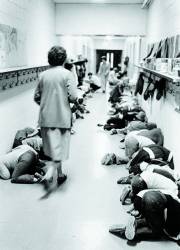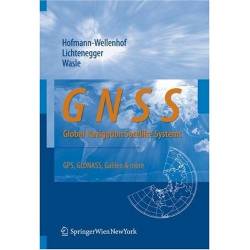One of the first feature articles I wrote as a newly minted GNSS magazine editor 26 years ago was about an advanced rail traffic management system based on GPS that Burlington Northern, with the help of Rockwell Collins, had designed and implemented.
One of the first feature articles I wrote as a newly minted GNSS magazine editor 26 years ago was about an advanced rail traffic management system based on GPS that Burlington Northern, with the help of Rockwell Collins, had designed and implemented.
Headed up by a couple of former NAVSTAR GPS Joint Program Office leaders — Don Henderson and Ed Butt — BN’s Advanced Railroad Electronics System (ARES) demonstrated its effectiveness on 250 miles of BN track in the Mesabi Iron Range from 1987 to 1992. ARES tracked and controlled seven locomotives and three maintenance vehicles, from a control center in Minneapolis, Minnesota.
I titled the article, which ran in the May/June 1990 issue of GPS World, “On Track with GPS.”
Everyone who came to Minnesota to watch ARES in action — including Federal Railway Administration (FRA) and National Transportation Safety Board (NTSB) officials, congressional staffers, shippers, Draper Lab analysts, and railroad executives — agreed that ARES was a fine example of positive train control (PTC). Using a GPS constellation that was only half-built and the much less robust computers and wireless communications of that era, PTC could still help avoid collisions, control train speed, and improve rail traffic efficiency for the nation’s railroads.
Fast-forward 26 years to a 50-mph–rated railroad curve outside of Philadelphia, Pennsylvania, where on May 12 an Amtrak passenger train left the tracks at 106 mph, killed 8 people and injured 200. Meanwhile, every day thousands of railcars — a 4,000 percent increase since 2008 — carrying highly explosive shale oil are being hauled through American cities and along the nation’s waterways and through other sensitive environments.
Positive Train Control — why is this still not a thing 26 years later? Mostly because of strong resistance from the rail industry and weak oversight by federal regulators.
NTSB has included PTC on its “Most Wanted List” every year from the inception of the list in 1990, but then the board doesn’t regulate U.S. railroads. The Rail Safety Improvement Act of 2008 (RSIA) mandated that PTC be implemented on so-called Class I rail tracks by the end of this year. That legislation came about after the collision of a California Metrolink commuter train and a Union Pacific freight train resulted in 25 deaths and 102 injuries.
In the wake of the latest Amtrak accident, FRA officials say they will issue an emergency order to begin implementing a train control system that notifies an engineer when a train exceeds the speed limit and automatically applies the brakes — that is, PTC. After a long series of oil car accidents, U.S. Secretary of Transportation Anthony Foxx ordered railroads to use stronger-walled railcars to transport oil and implement an automatic braking system to control speeds.
Will all this kerfuffle actually get PTC back on track? Well, as NTSB Chairman Christopher Hart told a U.S. House Committee on Transportation and Infrastructure subcommittee in April, not really.
“We know that several rail carriers have stated that they will not meet the 2015 deadline,” Hart said. “This is disappointing.”
At the same subcommittee hearing, Acting FRA Administrator Sarah Feinberg admitted, “Although the railroads subject to the mandate are working diligently towards implementation of PTC systems, FRA is concerned that the vast majority of these railroads will not be able to meet the deadline.”
Currently, PTC systems are in use on Amtrak lines only on the Northeast Corridor in the United States and on the Michigan line between Chicago, Illinois, and Detroit, Michigan.
Oh, I should mention that on May 14, 2012, the FRA issued a final rule that exempted about 10,000 miles — out of about 140,000 miles — of U.S. track from the RSIA’s PTC mandate.
As Mayor Tom Weisner of Aurora, Illinois, where more than 40 oil trains roll through town each week, told NPR news: the new rules are full of holes and do little to protect those who live near the rails.
“I don’t think our federal regulators did the job that they needed to do here,” he says. “I think they, uh . . . wimped out, as it were.”





